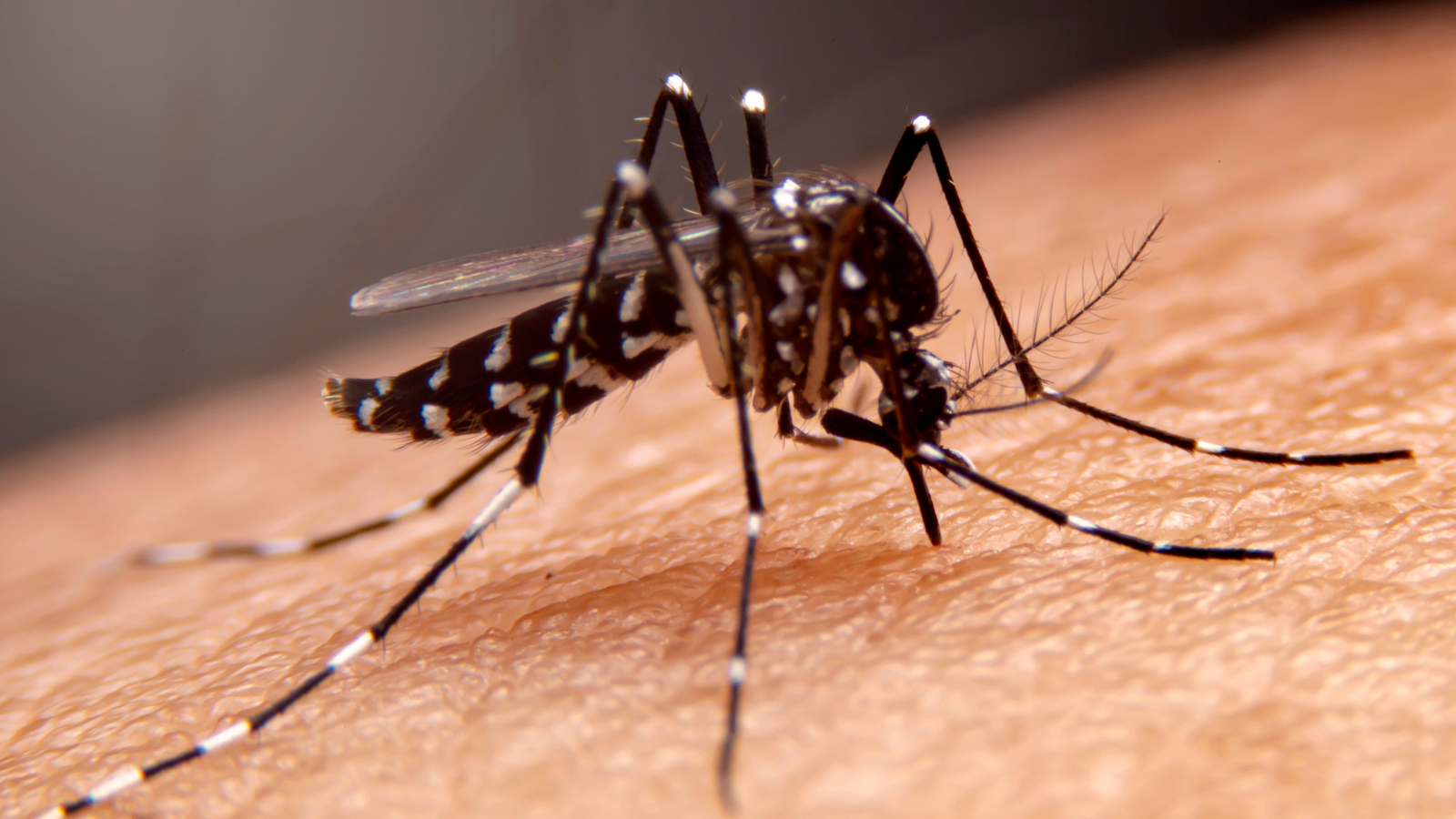|
|
|
SENATOR MAHER ACHIEVES PERFECT VOTING RECORD IN 2024 SESSION


|
|
|



In recent weeks, the news reports have been constant – mosquito-borne illnesses like West Nile virus and Eastern Equine Encephalitis, also known as EEE, have been found in towns and cities around Connecticut. As scientists trap and test the tiny insects, they’ve found West Nile in bugs in more than a dozen places, with EEE’s presence growing as well.
This is not necessarily something new, as West Nile has circulated in Connecticut semi-frequently in past years since its presence was first detected in 2000. As recently as 2019, schools and sports programs adjusted their schedules and put new procedures in place to prevent the potential spread of the viruses when they were tracked in many communities. But this year, West Nile and EEE arrived ahead of schedule – a trend that may have a concerning pattern.
While West Nile usually grows in prevalence around mid-August, with more tracking seen until autumn temperatures kill off mosquito populations statewide, News 12 Connecticut reported this year got an early start for the illness. This year saw the first infections found in early July – that’s up to six weeks ahead of schedule as Fairfield County, where first reports came out of, usually sees the virus grow in prevalence in mid-August. Last year saw cases in mosquitoes grow beginning in mid-July, while first infections in humans (of which there are thankfully none yet this year)
Several studies have linked the increase in tracked cases among mosquitoes with the effects of climate change. This winter’s unusually mild weather with lots of rain, caused by El Nino, contributed to cases – but conditions like those are expected to be more common in future years, and directly correlate with increased mosquito activity. According to the Environmental Protection Agency, climate change can accelerate mosquito development, biting rates and incubation of diseases they carry; mild winters and drought, as well as bird migration and breeding patterns, impact how West Nile spreads.
In fact, the National Oceanic and Atmospheric Administration and US Centers for Disease Control and Prevention found the largest outbreak of West Nile virus were found in the summer and fall of 2021 in Arizona, with more than 1,500 cases tracked. A wetter-than-average monsoon season in the impacted part of Arizona fostered increased mosquito development, dropping three times as much rain as expected in the region, which maintained mosquito breeding sites and possibly led to a massive increase in the regional mosquito population.
While up to 80% of people who contract West Nile virus will never show symptoms, it can cause serious illness and even death for younger, older and vulnerable populations. EEE is even worse, threatening the lives of up to 30% of people who contract it. Being mindful of mosquito presence can help protect against the insects, as can simple precautions – bug spray, long sleeves, pants and shoes, and performing upkeep in your home (fixing screens) and property (getting rid of standing water) all play a role in keeping mosquitoes away and keeping the rest of your summer healthy and fun.
Posted by Joe O’Leary



A new campaign has been launched in Connecticut with the goal of protecting children from the harmful health impacts of lead and creating a lead-free Connecticut. The Lead Free CT campaign, overseen by the Connecticut Department of Public Health, will:
· Make older homes where children or pregnant people live lead safe;
· Collect information on all known lead service water lines in Connecticut;
· Replace lead pipes that bring water to homes, childcare centers, and schools;
· Support families who find lead in their home or water;
· Offer funding to get Connecticut communities lead-free;
· Have all Connecticut children tested for lead;
· Raise awareness of lead testing and safety among parents; and
· Educate communities, contractors, and landlords on lead laws and safety.
On Wednesday, August 7, Governor Lamont, Senator Blumenthal, Congressman Larson, Commissioner Juthani, state Senator Saud Anwar, and officials from the Department of Public Health and Connecticut Children’s joined for the launch of the Lead Free CT campaign. As Senate Chair of the Public Health Committee, Senator Anwar says he knows lead poisoning still has too strong of an impact on far too many children in our state.
“This new initiative will support lead abatement for homeowners to make homes lead-safe, collect information on where there are still lead pipes in our state, and test children for lead to make sure all have the best opportunities to learn and grow,” said Sen. Anwar. ” We owe every child in our state the best chance to grow into the adults leading our next generation and by preventing and fighting lead poisoning, we’ll get that much closer to that goal.”
“Every year, more than 1,000 Connecticut children are impacted by lead,” Governor Lamont said. “Lead poisoning can affect our children by causing health and brain changes that may impact them through school years and beyond – causing behavior problems, poor performance, and a risk of long-term, negative impacts. Based on the data of children tested in Connecticut, where blood lead levels trigger the requirement for environmental testing of the home, lead-based paint and lead dust in pre-1978 homes are the largest contributors to childhood lead exposure in homes.”
A key component of the Lead Free CT campaign includes the launch of a lead abatement program, which is providing homeowners and landlords with the opportunity to make older homes lead-safe by removing lead paint hazards at no cost. Funded by $20 million from the federal American Rescue Plan Act, this limited-time program will help in the safe removal of lead hazards from homes, including family childcare settings. Participation in this program is entirely voluntary and free of charge to homeowners and landlords. The Connecticut Department of Public Health is partnering with the Connecticut Children’s Medical Center to administer the program.
To view eligibility details and apply, visit leadfreect.org.
Posted by Michelle Rappaport

|
||||||||||||||||||
|


Get ready to shop without the additional sales tax! Connecticut’s sales tax-free week on select items will begin on Sunday, August 18 and go through Saturday, August 24. This much-anticipated event where shoppers can enjoy a break from the usual sales tax on certain items lines up with back-to-school shopping. Connecticut shoppers can save on essential goods from clothing to school supplies to electronics to home essentials.
The statewide sales tax is 6.35% for the retail sale, lease, or rental of most goods. During sales tax-free week, certain clothing items or footwear costing less than $100 are exempt from sales tax. All you have to do is show up to your favorite stores. The sales tax holiday applies to both state and out-of-state retailers with stores in Connecticut, so you should not be taxed at any stores in the state. The tax exemption also applies to purchases made online, on the phone or by mail, as long as the customer pays full price during the sales tax-free week.
Sales Tax Free Week promotes consumer spending, supports local businesses, and provides tangible savings to the community. This week provides immediate financial relief by eliminating the sales tax making back-to-school shopping more affordable. It helps families manage their budgets more effectively, especially during times of year when expenses typically increase. Additionally, this event stimulates local economies by boosting retail sales, as shoppers are more likely to spend when they can save on taxes.
For a full list of which items qualify for the sales tax holiday, you can visit the Department of Revenue’s website.
Posted by Michelle Rappaport


Today, state Senator Herron Keyon Gaston (D-Bridgeport), is welcoming 3 million dollars in funding approved by the State Bond Commission for a remediation project in Stratford. Funds will be allocated to Raymark Industries, Inc. Superfund Site to remediate hazardous waste at the contaminated disposal site.
“This has been an ongoing project for years and with this funding, it is my hope the area will continue to be maintained and get more hazardous material removed,” said Sen. Gaston. “I am thankful to the State Bond Commission for approval of these funds as this is a real problem for our community. Exposure to this waste can cause serious health problems and with the proper management and care, the cleanup of this site will ensure a safer environment for future generations.”
Raymark was a manufacturer of automotive brakes, clutch parts, and other friction components, primarily for the automotive industry. Raymark’s manufacturing waste was historically disposed of as fill on the facility, but over time this waste material was also disposed of within Stratford at a minimum of 46 residential properties, and at numerous other commercial, recreational and municipal properties. In addition, several wetland areas in close proximity to the Housatonic River were also filled in with Raymark’s manufacturing waste.

|
|
|
|



State officials sought Wednesday to help Connecticut consumers recognize the signs of card skimming fraud and highlighted efforts to thwart credit, debit, and EBT card skimmers at retailers across the state.
Skimmers are illegal devices, which thieves place on card readers attached to ATMs, gas pumps, and store check-out terminals. These devices are designed to steal sensitive information like card numbers and PINs and are often constructed to resemble legitimate card reader components.
However, consumers can protect themselves from this type of fraud by taking a few steps before using a card reader:
-Inspect the device for anything out of place. This might be unusual dimensions, mismatched colors or sticky residue on the keypad.
-Gently shake the card reader to see if any parts have been tampered with or improperly attached.
-Inspect the card slot for components that seem loose, altered or out-of-place.
Consumers who identify suspect card readers should alert authorities and use a different sales terminal. Connecticut residents can also protect themselves by taking additional steps including using contactless payment options like chip cards, Apple Pay, and Google Pay; monitoring their accounts for suspicious activity; shielding keypads as they enter their PINs and changing their PINs often.
In a press release, Gov. Ned Lamont said state agencies were working together with law enforcement to combat card skimming scams in Connecticut.
“But it will require all of us remaining vigilant, learning the signs of a skimming device, sharing that information with our friends and family, and reporting any incidents to the police to bring this scam to an end,” Lamont said.
State Police Sergeant Luke Davis urged all residents to be alert to inconsistencies in the appearance of card-reading devices and avoid terminals that appear damaged or altered.
“Physically check the PIN pad and card slot of an ATM for security, as some scammers use an adhesive product when tampering with them,” Davis said. “Always obscure the view of the ATM or retail keypad so that your PIN stays private. In addition, when fueling a vehicle, use the pumps positioned closest to the building as they are least likely to be tampered with.”
Consumers can report suspected skimming devices to store managers or police and file complaints online with the Connecticut Department of Consumer Protection at ct.gov/DCP.
Posted by Hugh McQuaid

|
|

|
||||||||||||||||
|